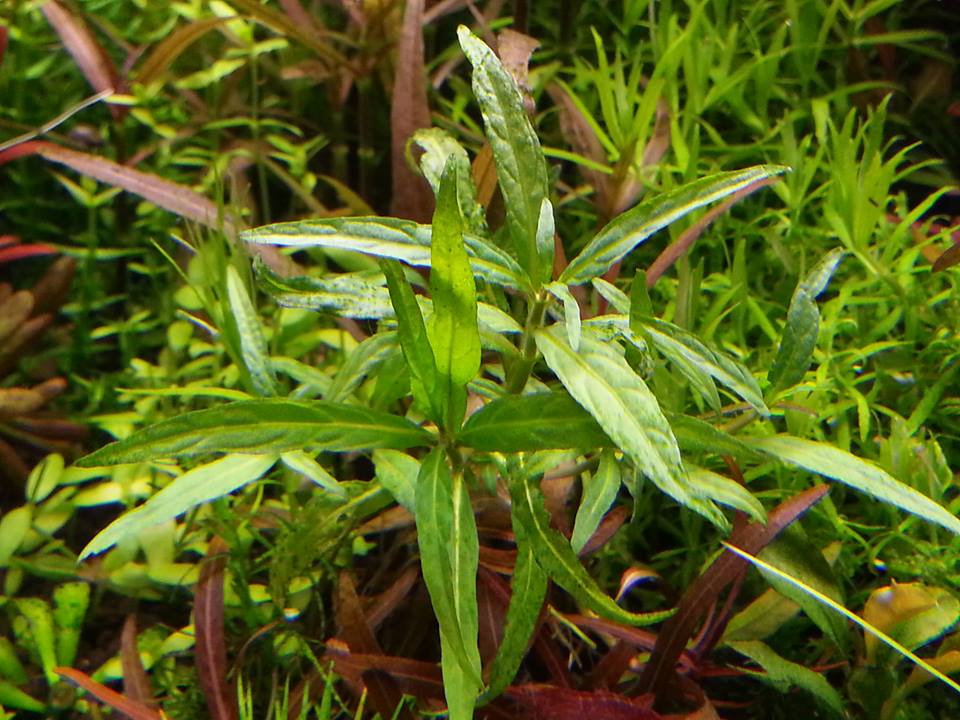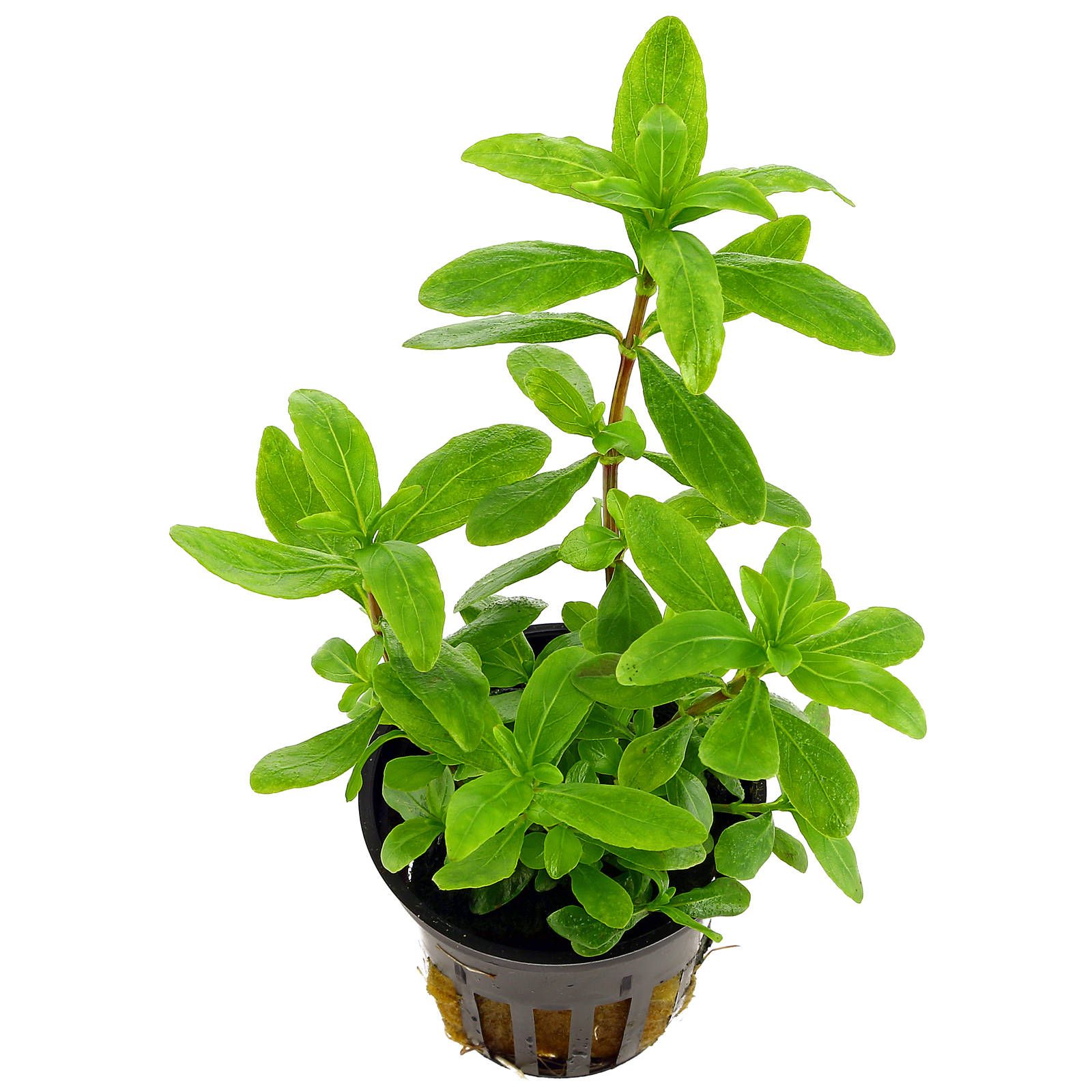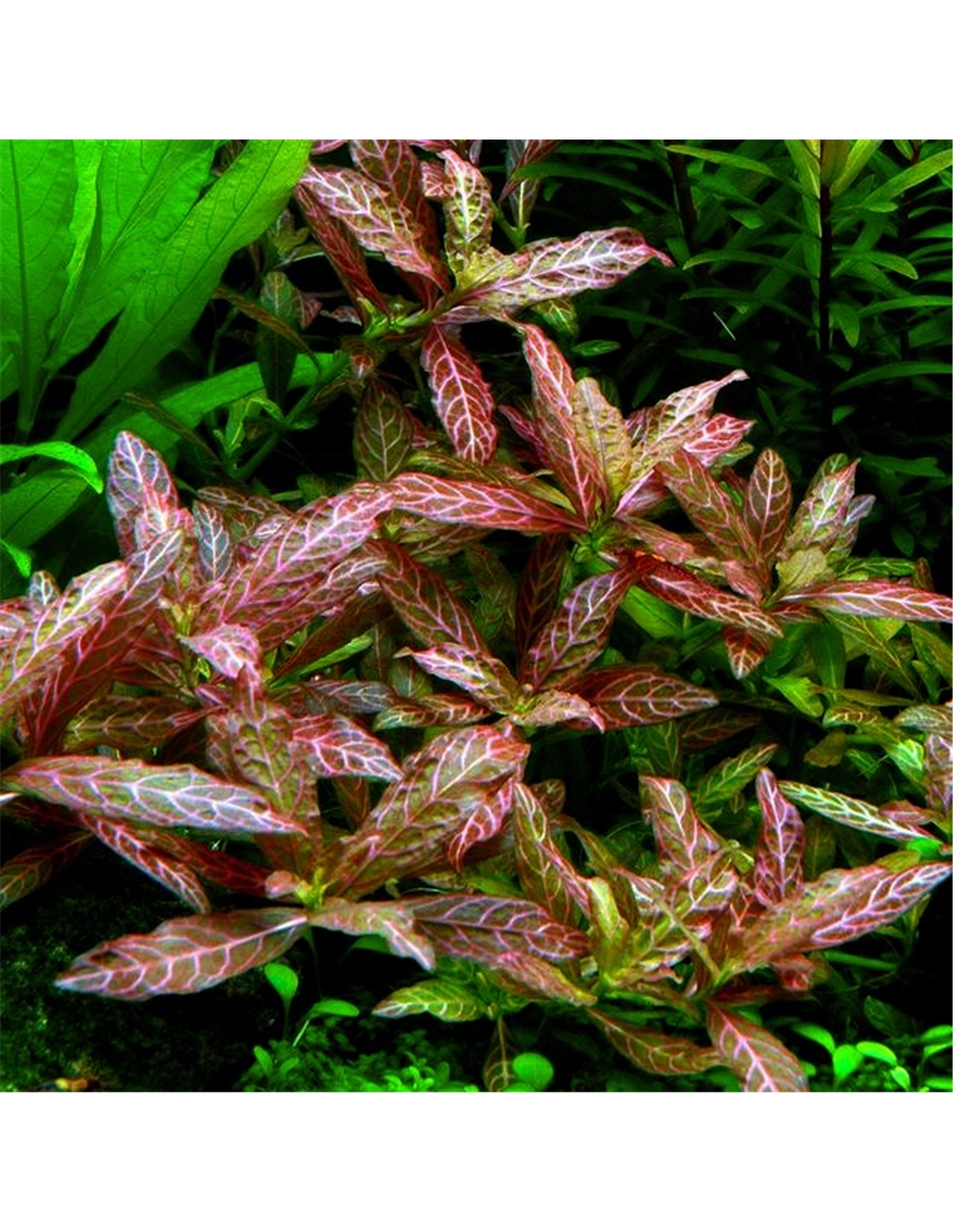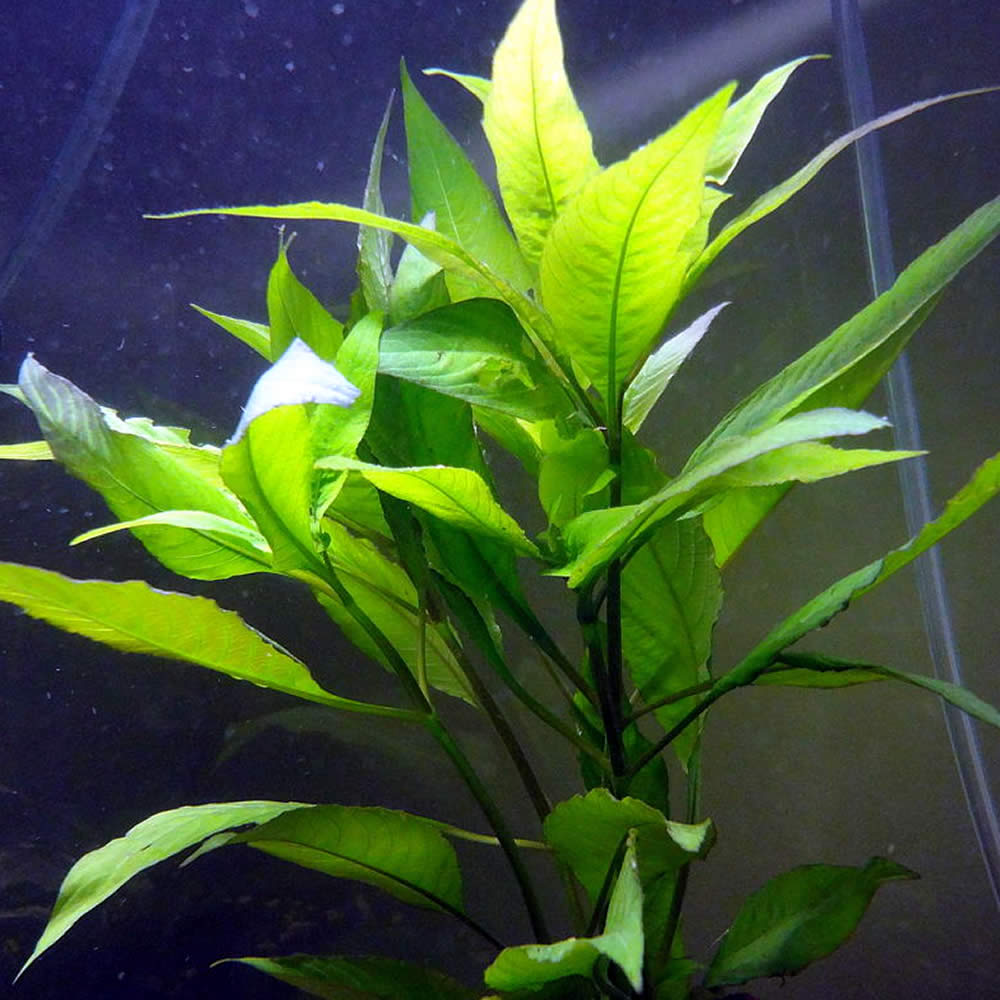
Hygrophila Polysperma , Acuario Plantado Mercado Libre
How to Plant Water Wisteria. Carefully remove the stems from the rubber band, bundle, or rock wool inside the plastic pot. Trim any stems or leaves that were damaged during transportation. Using your fingers or tweezers, plunge the base of each stem as deeply as possible into the gravel or substrate. Plant each stem separately approximately 1-2.

Staurogyne stolonifera aquarium plant AquaTank Rare Aquarium Plants
Hygrophila fish tank growing is simple enough. In fact, it's hard to make mistakes with these plants, which are very forgiving. It can tolerate most types of water, but you may want to add a trace mineral supplement once in a while. For substrate, use gravel, sand, or even soil. Plant into the substrate and watch it grow.

hygrophila pinnatifida (pacote 3 unidades) planta aquática Freshwater
Hygrophila 'Araguaia' is a medium category plant available in Tropica's 1-2-Grow range where it is produced in-house in Tropica's Danish laboratory. It stays relatively short when compared with most other Hygrophila species with compact needle shape leaves that can range in colour from reddish brown through to purple depending on the lighting and nutrient conditions.

Hygrophila Corymbosa Compact Live Aquatic Plant Glass Aqua
Hygrophila sp. chai grows more prostrate when the surrounding area is cleared. It is important to keep the area around it unobstructed. Once it reaches a certain size, it becomes much more stable, and will grow steadily, but slowly. The main parameters to maintain is high CO2 levels with good flow, unimpeded access to light.

Planta N Hygrophila Rio Mobydick aquarios 218
Ecology: Hygrophila polysperma is a wetland plant that can occur as a submerged or an emersed plant. It inhabits lakes, streams, marshy areas, ditches, and rice-fields (de Thabrew 2014). This species can grow in water at depths up to 3 m and on stream banks as an emersed plant (Nault and Mikulyuk 2009).

Hygrophila polysperma Características y Cuidados.
The hygrophila corymbosa is a simple plant that is fairly easy to care for. There are a few subspecies of the hygrophila corymbosa, though that are similar in most characteristics. This aquatic plant creates a beautiful view with its long, slim leaves that are tapered at each end. This stem plant is bright green in color and can sometimes change colors based on the amount of lighting it receives.

Hygrophila Applied Aquatic Management
Hygrophila Salicifolia, more simply referred to as "Hygro", is an aquarium plant that hobbyists will typically place in the background of an aquascape. A member of the Acanthaceae family, this flowering plant is a member of the same genus as the more common Water Wisteria, and shares similar care requirements. Native to the wetlands of southern.

Hygrophila polysperma Sunset
Hygrophila, commonly known as swampweeds, is a genus of flowering plants in the acanthus family, Acanthaceae.There are about 80 to 100 species, of which many are aquatic plants.The genus is distributed across the tropical and subtropical world. It is one of only two genera in its family that contains aquatic plants, the other being Justicia.The genus is treated in the tribe Hygrophileae, which.

Hygrophila Fish Tank Growing Learn About Hygrophila Aquarium Plants
East Indian hygrophila, also known as Miramar weed, Indian swampweed, and hygro, is an invasive aquatic plant that grows under submersed and emergent conditions. The species' center of origin is unclear, but it is thought to be native to the East Indies, India, Malaysia, and Taiwan (UF/IFAS CAIP 2015). Although many species of Hygrophila are.

Hygrophila corymbosa Plantas acuáticas MercadoAcuatico
Water type, Temperature, Hardness, and pH: Temperature: Willow hygro does best in warm tropical temperatures from 68 - 82°F (20 - 28°C). This plant does not tolerate cold water. If the temperature drops below 68°F (20°C) it starts growing slowly. pH: This plant prefers water pH in the range of 6.5 - 8.0.

APRENDA TUDO SOBRE HYGROPHILA POLYSPERMA! TAMANHO, PH, ILUMINAÇÃO, COMO
Impacts. Hygrophila is a fast-growing aquatic invasive that can outshade and outcompete other submersed plants. It can grow to occupy the entire water column and forms dense mats, blocking light penetration below. Hygrophila produces adventitious roots at stem nodes, therefore fragments can easily grow into new plants.

Dwarf Hygro Hygrophila polysperma Variegated AquaBang!
Introduzido em alguns países incluindo EUA. Tamanho : 60 cm. pH: 6.0 a 9.0 — Temperatura: 18°C a 30°C. Iluminação: Moderada a intensa. CO2: Não necessário. Substrato: Simples. Crescimento: Rápido. Descrição : planta bastante rustica, ideal para aquaristas iniciantes. Bastante utilizada no fundo do aquário, porém poderá ser.

Hygrophila polyspermasubmerged Aquarium Plants Lincolnshire Pond
Hygrophila Polysperma, also known as Dwarf Hygro, is an aquatic plant that is often used in aquariums. They are indigenous to India and Malaysia and may also be referred to as East Indian Hygrophila and Indian Swampweed. Hygrophila polysperma derives its name from the Greek words hydro, meaning "water," and phila, meaning "love.".

Hygrophila angustifolia Acuario Red Fish
The growth rate of Hygrophila pinnatifida depends on the environment of your tank and the stage of the plant's development. With enough light and CO₂, it can grow quickly, reaching a height of 30 cm (11.8 inches) and a width of 25cm (9.84 inches) or more. It's recommended to keep the shoots trimmed to prevent it from shadowing other.

hydrophila pictures, photos
Abstract. Acanthaceae is an eurypalinous and pollen morphology has been used in species delimitation and as a support to new taxa recognition. The aim of the present study is to provide new pollen descriptions for the Brazilian species of Dyschoriste (7 spp.) and Hygrophila (4 spp.). We analysed the pollen under light and scanning electronic microscopy.

Hygrophila angustifolia Acuario Red Fish
Hygrophila polysperma is simple to propagate in the home aquarium. Simply pinch off a segment and plant it in the substrate. You can even use one, fully-formed leaf, or a piece of stem to create a new polysperma. So, if you want to plant a new setup, you can break up one mature Hygrophila polysperma into multiple plants that you can then plant.